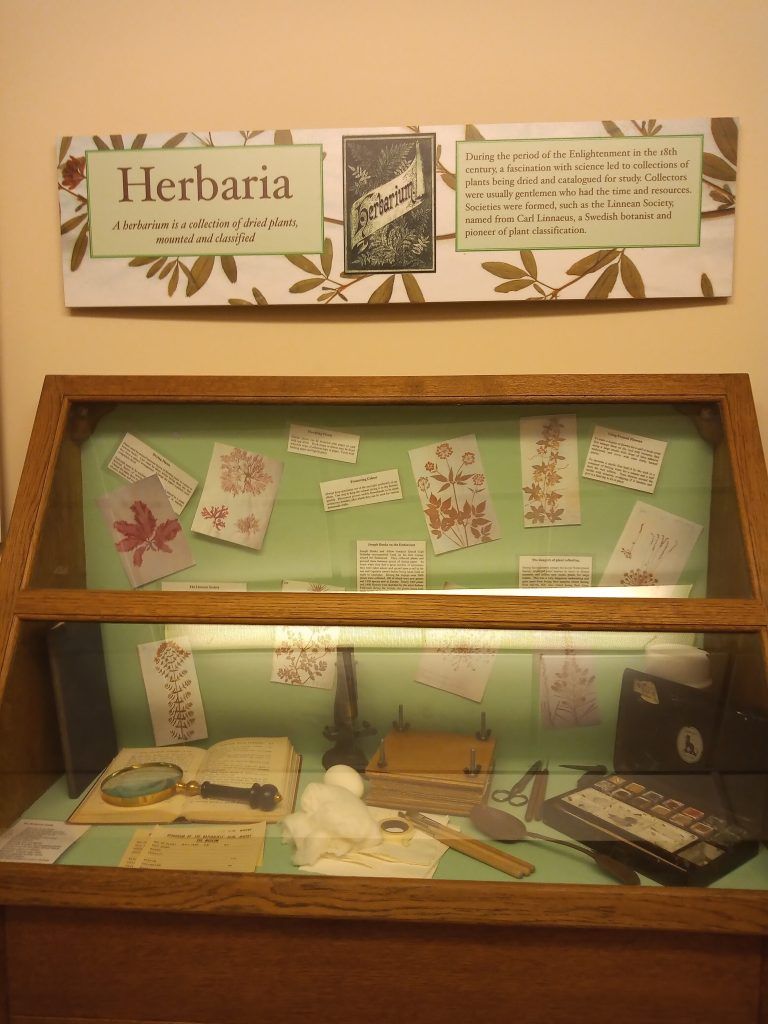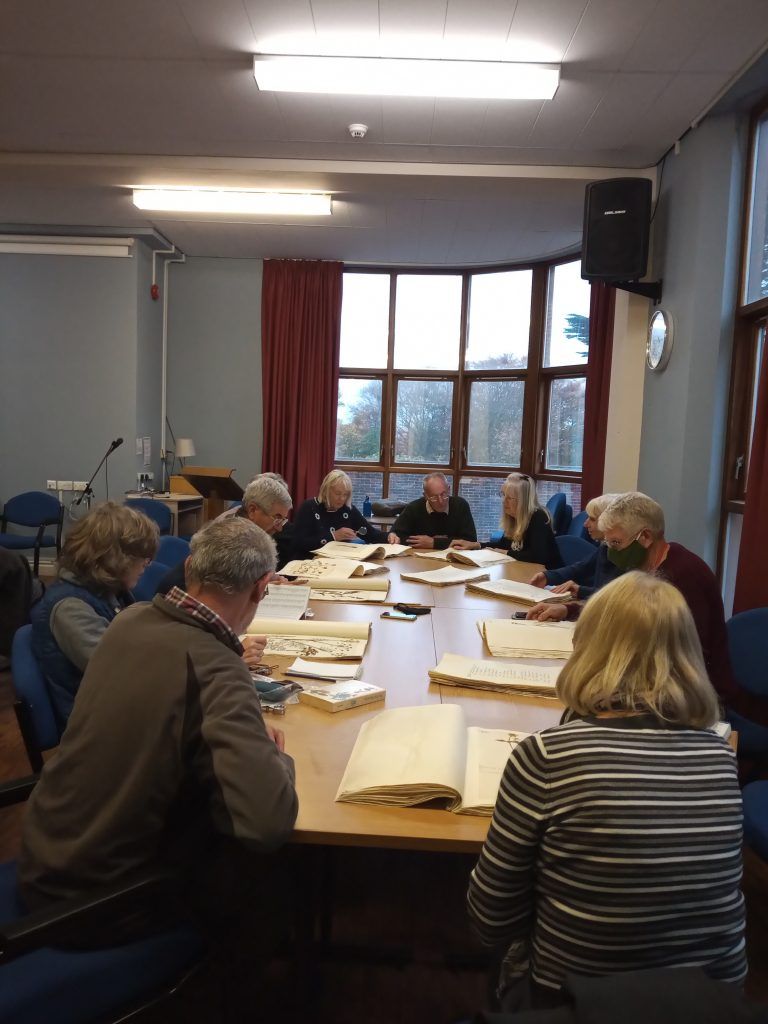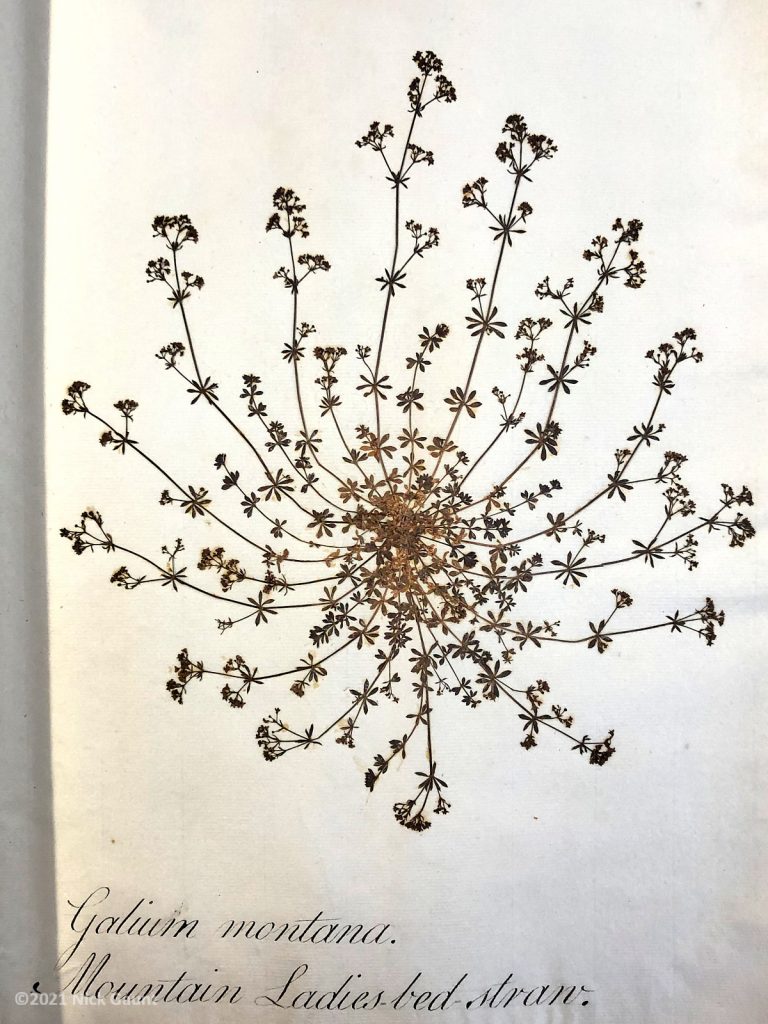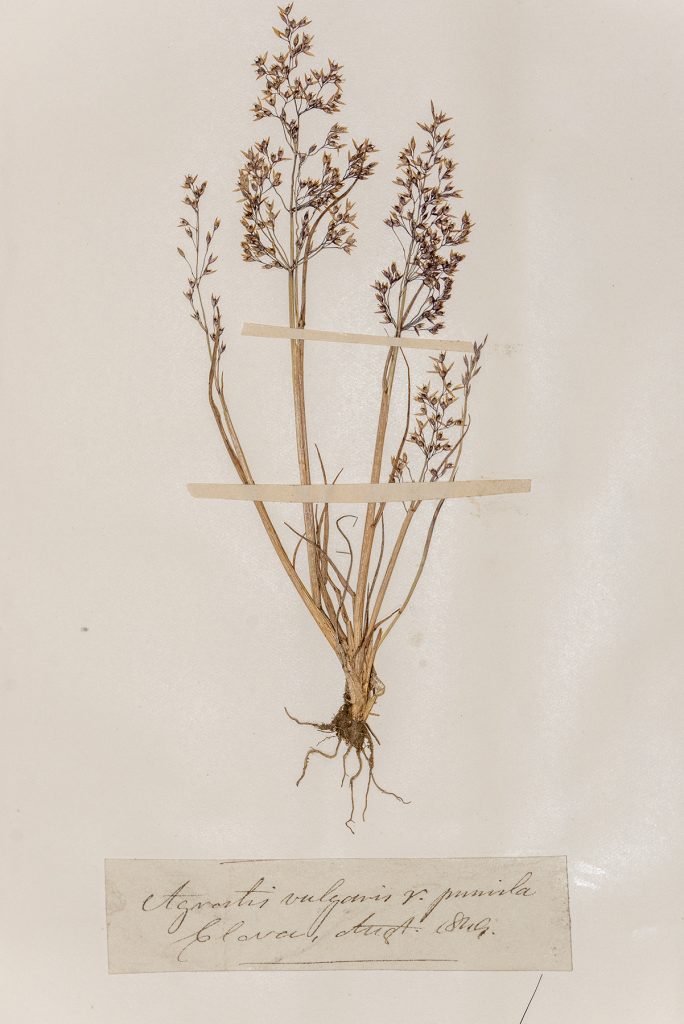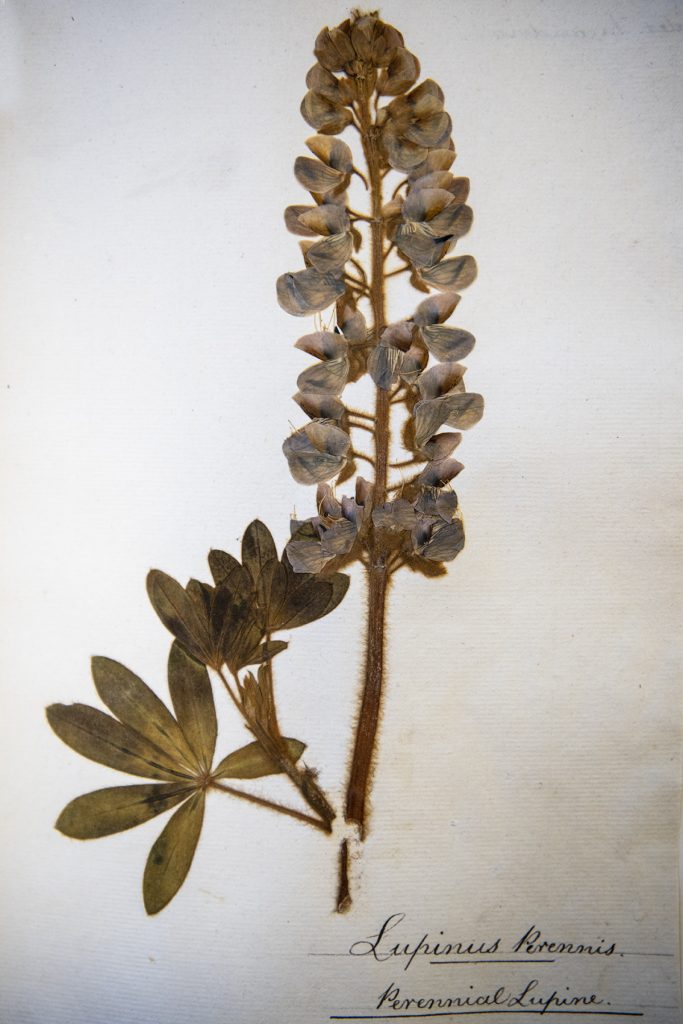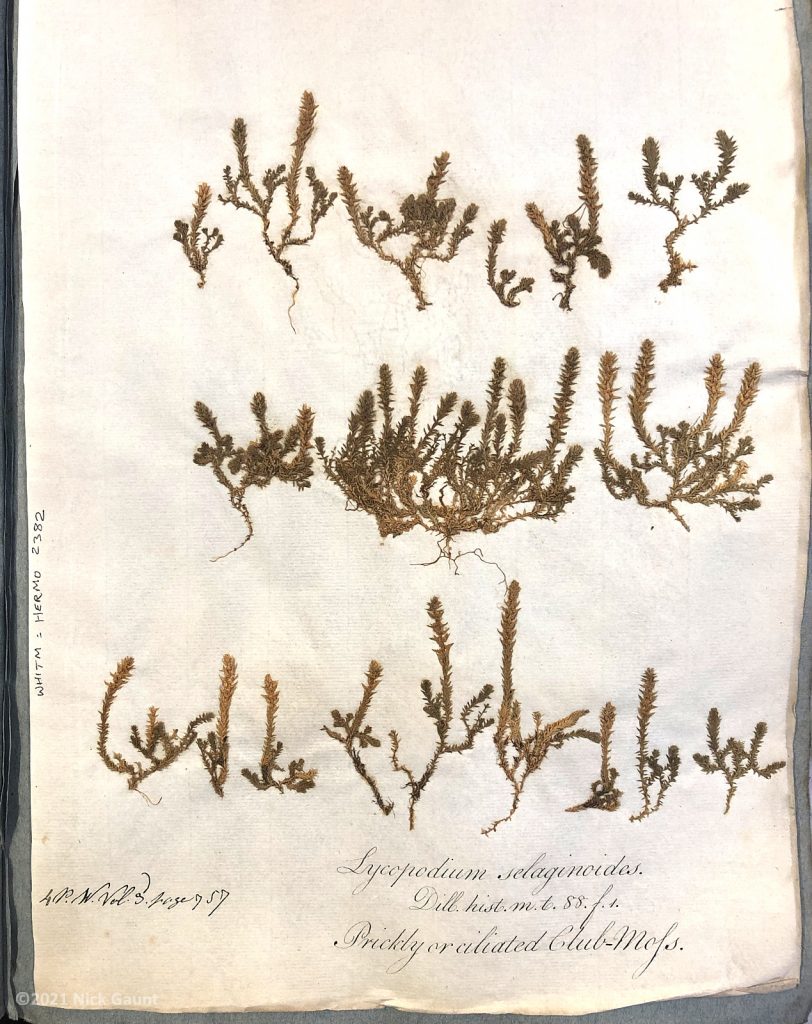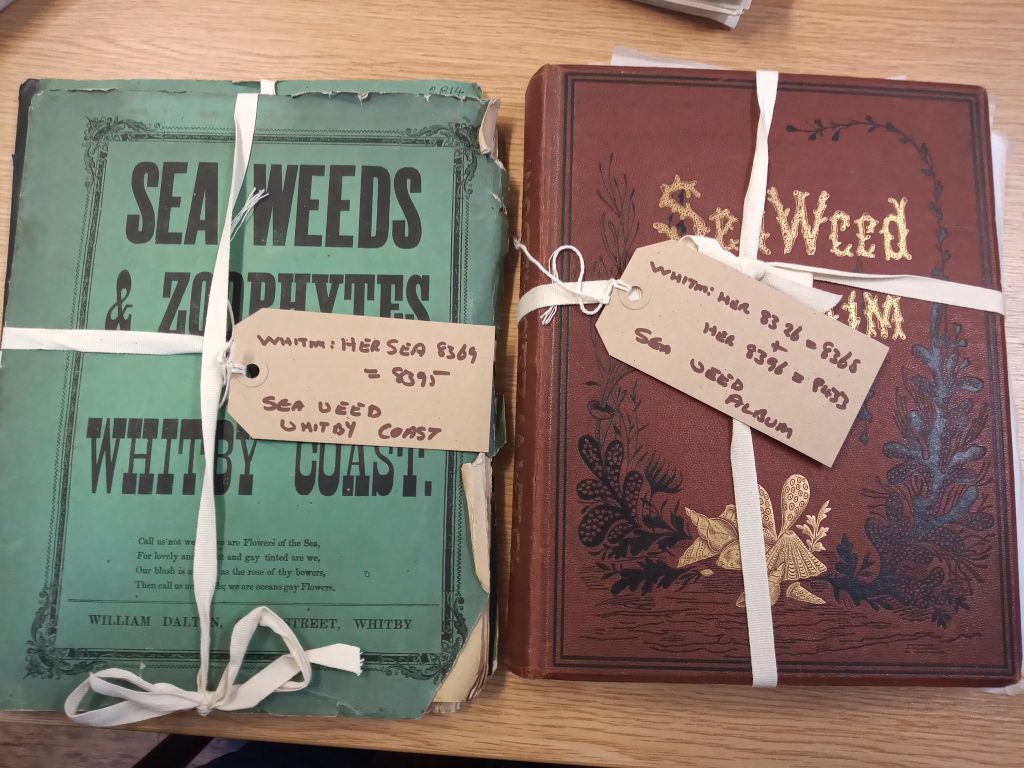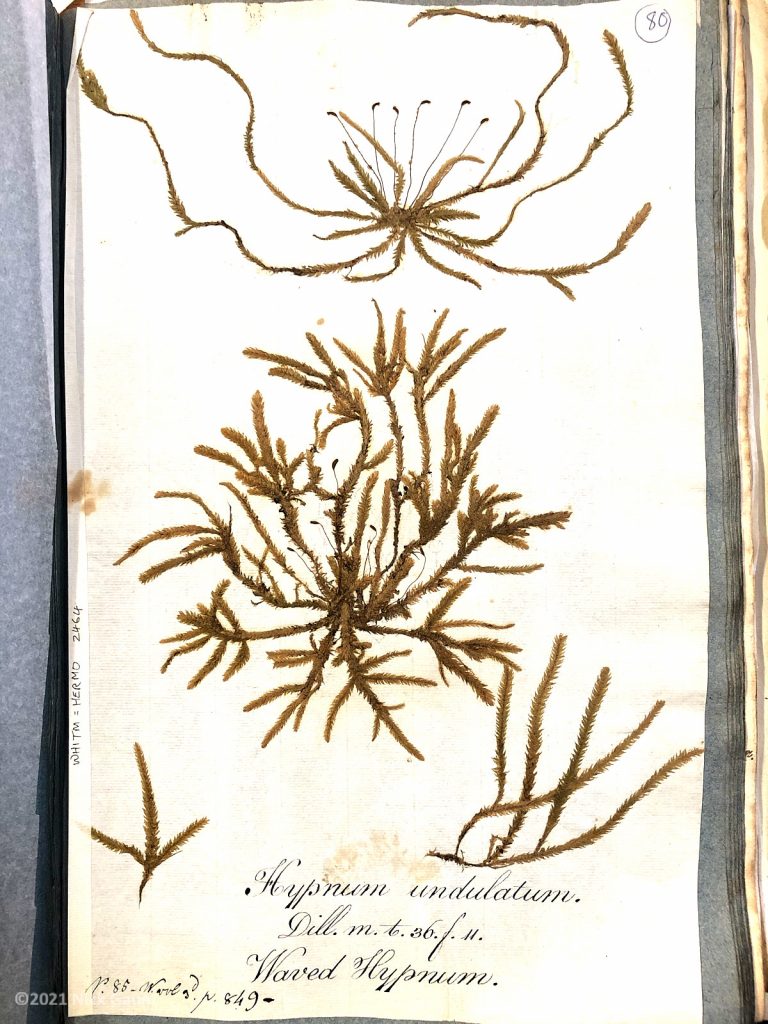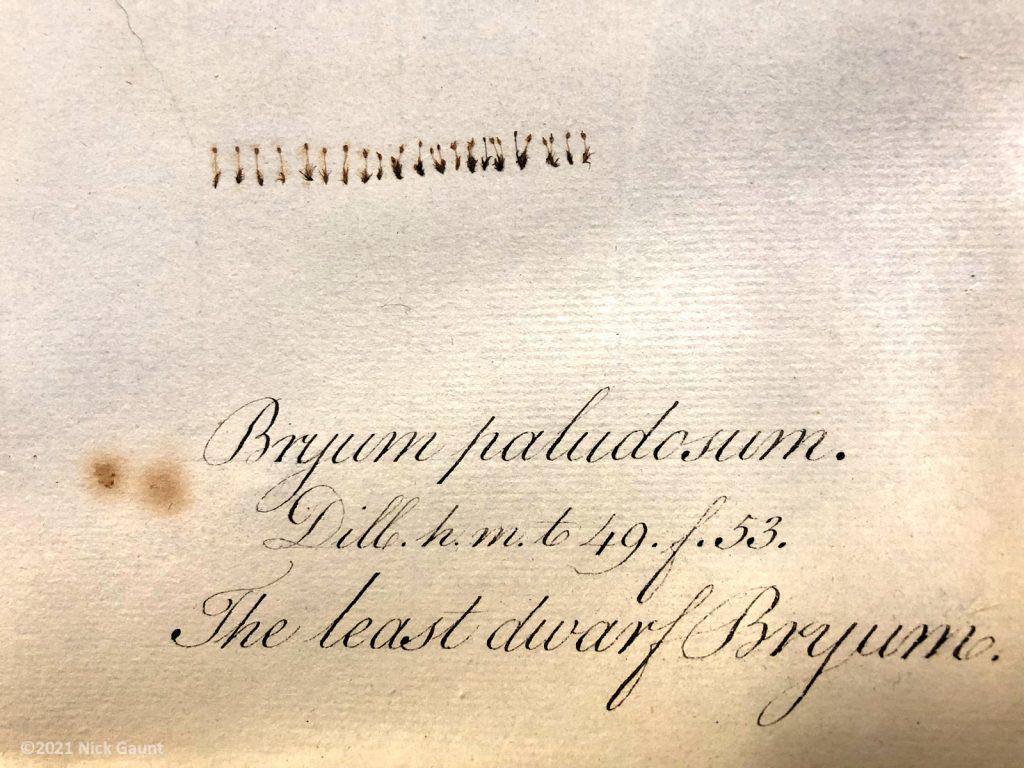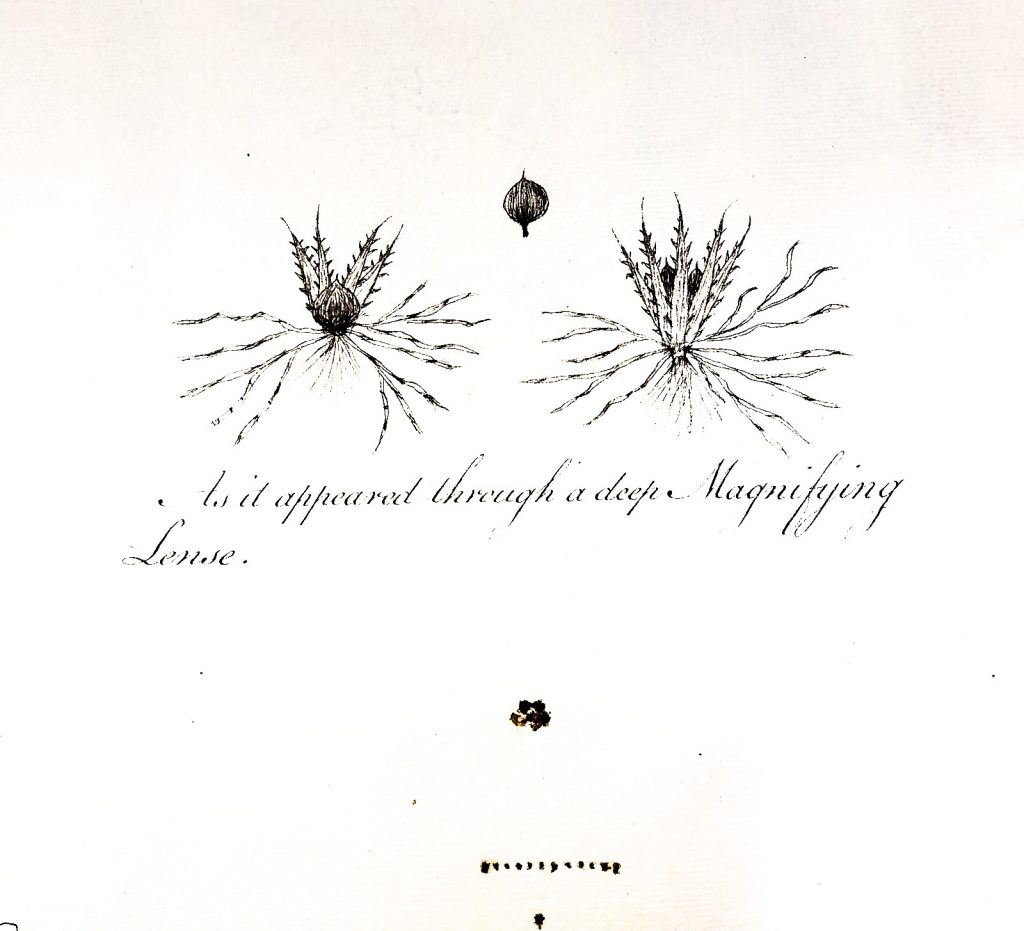This was a field trip with a difference. Most of us had never viewed a herbarium before, I think some people had not even heard of such a thing! We were lucky that a museum not impossibly far away has such an excellent collection of historical dried flowers – there are some 10,000 specimens at Whitby! Most of these were collected in the early 19th century, mainly by four different botanists, and the curator, Tamsyn Naylor, told us that they are rarely viewed. The collection of wrapped mosses, in particular, never see the light of day being considered too fragile to unwrap. There were, however, volumes of pressed mosses laid out in the same way as the flowering plants, so Nick our Bryologist had plenty to go on. There was also a volume of pressed dried seaweeds which were unexpectedly beautiful, unfortunately the name of the collector has been lost. (Further details of what is known of the identity of these collectors are available on the museum website).
Unfortunately, although those Victorian botanists took immense care in the presentation of their specimens, there is insufficiently precise labelling of location and date on most of the plants, which makes the collection of little use for modern analysis of plant distribution and trends. But there is no doubt that we have lost a huge amount of plant diversity – so many of the specimens were rarities which we never see nowadays, certainly in Yorkshire, for example the old arable weeds with such colourful names such as Venus’s-looking-glass, Thorow-wax, Shepherd’s-needle…. modern farming has more or less done away with all these.
Perhaps the most striking feature of these specimens was the extraordinarily painstaking methods of display and preservation. None of your plonking the plant on a piece of paper and sticking a couple of strips of Sellotape over it, these plants were carefully arranged flat then glued, leaflet by leaflet, invisibly onto the page, such that even really intricate foliage with tiny leaflets like the Water-dropworts was spread out completely flat giving an appearance more like a watercolour than a three-dimensional specimen. (See photos below). Although nearly 200 years old it was still possible to view hairs, glands, tiny tendrils. Apparently, egg white was used as an adhesive. But they were not daunted by substantial structures such as Pignut tubers, hips, spiky Bur-reed fruits, even twigs, which were glued firmly to the page as well! And the title of the plant (often slightly different from its modern name) was written at the bottom in exquisite copperplate writing. One can only marvel at the patience (and free time!) of these Victorians.Altogether this was a very rewarding visit to an exhibit which deserves to be better known. Many thanks to Tamsyn, and all the very obliging staff of Whitby Museum.
Muff Upsall
Herbarium display cabinet, Whitby Museum 10-11-2021 Kerry Morrison Members examining herbarium specimens, Whitby Museum 10-11-2021 Kerry Morrison Heath Bedstraw (Galium palustre), Whitby Museum, 10-11-21, Nick Gaunt Grass Agrositis vulgaris, Whitby Museum Herbarium 10-11-2021 Nigel Harcourt-Brown Perennial Lupin, Whitby Museum Herbarium 10-11-2021 Nigel Harcourt-Brown Lesser Club-moss (Selaginell selaginoides), Whitby Museum , 10-11-21 Nick Gaunt Seaweed specimen books, Whitby Museum 10-11-2021 Kerry Morrison Seaweeds, Whitby Museum Herbarium, 10-11-2021 Nigel Harcourt-Brown Part of the bryophyte collection, Whitby Museum, 10-11-2021 Plagiothecium undulatum, Whitby Museum, 10-11-21, Nick Gaunt Seligeria pusilla, Whitby Museum, 10-11-21, Nick Gaunt The smallest plant in the collection! Ephemerum serratum, Whitby Museum, 10-11-21, Nick Gaunt

